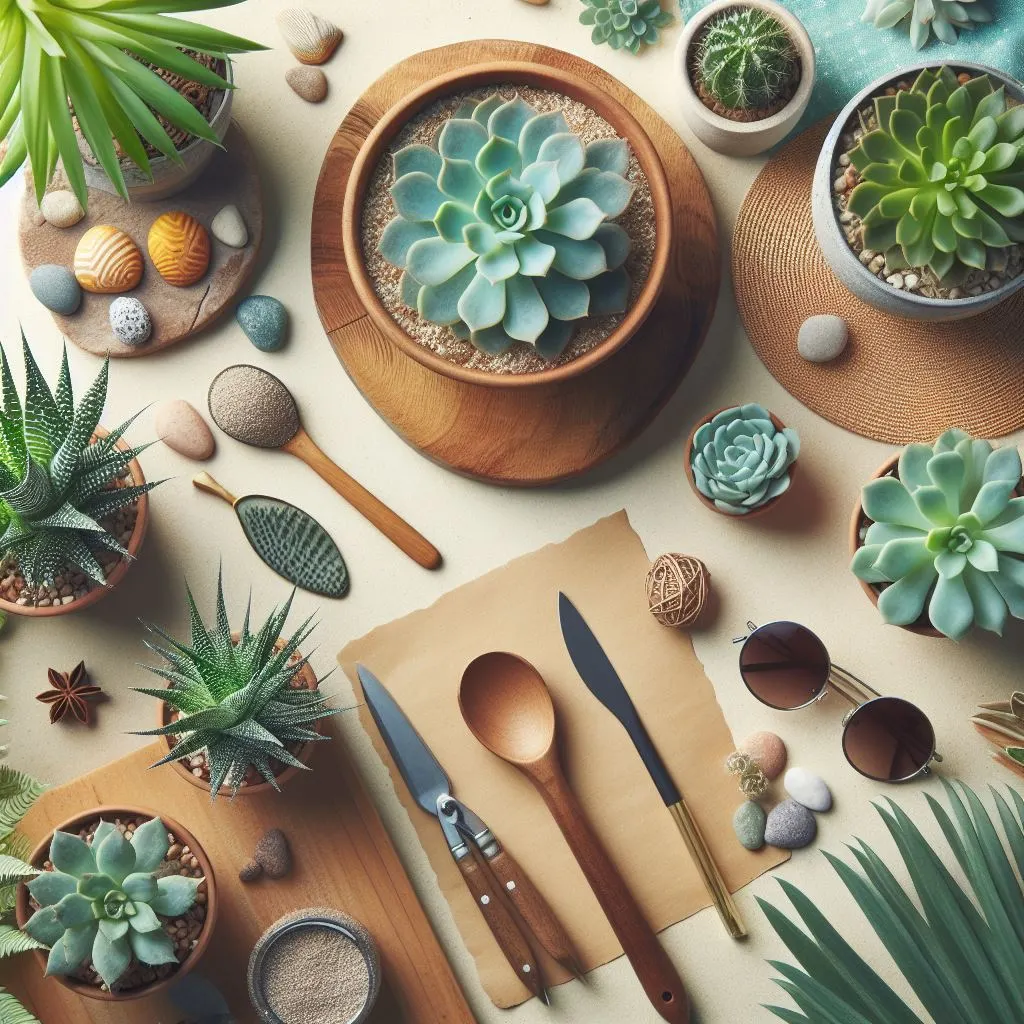Easy Care Tips for Tropical Succulents
1. What are Tropical Succulents?
Tropical succulents are a fascinating group of plants known for their ability to store water in their leaves, stems, or roots. This unique adaptation allows them to thrive in arid environments where water is scarce. Unlike traditional leafy plants that require frequent watering, tropical succulents can withstand periods of drought, making them ideal choices for busy plant enthusiasts or those living in regions with limited water resources.

These plants come in a wide range of shapes, sizes, and colors, adding diversity and beauty to indoor and outdoor gardens alike. Common examples of tropical succulents include aloe vera with its spiky leaves and soothing gel, the compact and resilient jade plant, and the strikingly tall and architectural snake plant.
2. Choosing the Right Pot
Selecting the right pot is crucial for the health and growth of your tropical succulents. Opt for pots made of porous materials such as terracotta or ceramic, as these allow excess moisture to evaporate, preventing waterlogged soil. Ensure that the pot has drainage holes at the bottom to facilitate proper water drainage and prevent root rot.
Consider the size of the pot as well. While it’s tempting to choose a large pot to accommodate future growth, too much soil can retain excess moisture, which is harmful to succulents. A moderately sized pot that provides some room for root expansion is ideal.
3. Ideal Soil Mix
Creating the perfect soil mix is essential for the well-being of tropical succulents. They thrive in well-draining soil that prevents water from pooling around the roots. A suitable soil mix can be made by combining equal parts of potting soil, perlite (or pumice), and coarse sand. This blend ensures proper aeration and drainage, mimicking the natural conditions these plants prefer.
Avoid using dense, water-retentive soils or those rich in organic matter, as they can lead to root rot and other moisture-related issues. Regularly check the soil moisture level by inserting your finger into the soil; water only when the top inch feels dry.
4. Sunlight Needs
Tropical succulents adore sunlight but can also tolerate partial shade, making them versatile choices for various indoor and outdoor environments. Place your succulents in locations where they can receive bright, indirect sunlight for several hours each day. In hotter climates, providing some protection during the intense midday sun can prevent sunburn and leaf damage.
Monitor your plants for signs of sun stress, such as leaf discoloration or wilting. Adjust their placement accordingly to ensure they receive the right balance of sunlight for optimal growth and health.
5. Watering Basics
Proper watering is perhaps the most critical aspect of tropical succulent care. Contrary to common belief, succulents do need water but in controlled amounts. Water your plants thoroughly but infrequently, allowing the soil to dry out between waterings. Overwatering is a common mistake that can lead to root rot and fungal diseases.
When watering, aim to moisten the soil evenly without waterlogging it. Use a watering can with a narrow spout or a gentle spray nozzle to direct water at the base of the plant, avoiding wetting the leaves excessively. Adjust your watering frequency based on environmental factors such as temperature, humidity, and season.
6. Fertilizing Tips
While tropical succulents are not heavy feeders like some other plants, they can benefit from occasional fertilization during the growing season (spring and summer). Choose a balanced, water-soluble fertilizer specifically formulated for succulents or cacti and dilute it to half strength to avoid overfeeding.
Apply fertilizer once a month, following the manufacturer’s instructions carefully. Avoid fertilizing during the dormant winter months when plant growth slows down. Over-fertilizing can lead to nutrient imbalances, salt buildup in the soil, and stress on the plants, so moderation is key.
7. Preventing Pests
Keeping pests at bay is essential for maintaining the health and appearance of your tropical succulents. Common pests that may affect succulents include mealybugs, aphids, spider mites, and scale insects. Regularly inspect your plants, especially along the stems and leaf undersides, for any signs of pest infestation.
If you notice pests, isolate the affected plants to prevent spreading and treat them promptly. Use organic remedies such as insecticidal soap, neem oil, or a mild alcohol solution to control pests effectively. Repeat treatments as necessary until the infestation is eradicated, and monitor nearby plants for any signs of new pests.
8. Common Mistakes to Avoid
- Overwatering: Resist the urge to water your tropical succulents too frequently. Allow the soil to dry out partially between waterings to prevent root rot and fungal issues.
- Poor Drainage: Use pots with drainage holes and a well-draining soil mix to ensure excess water can escape easily, keeping the roots healthy and aerated.
- Neglecting Sunlight: While succulents are adaptable, insufficient sunlight can lead to weak growth and etiolation (stretching). Provide adequate light for vibrant and compact growth.
- Ignoring Pests: Early detection and intervention are crucial when dealing with pests. Regularly inspect your plants and take prompt action to prevent pest damage and infestations.
9. Conclusion: Keeping Your Succulents Happy!
In conclusion, tropical succulents are delightful plants that can thrive with minimal care when their basic needs are met. By choosing the right pot and soil mix, providing adequate sunlight, watering appropriately, fertilizing sparingly, and monitoring for pests, you can enjoy healthy and vibrant succulents in your home or garden.
Remember that each succulent species may have specific care requirements, so it’s essential to research and understand the needs of your particular plants. With patience, observation, and a little TLC, you can create a beautiful and thriving succulent collection that brings joy and beauty to your surroundings. Happy gardening!